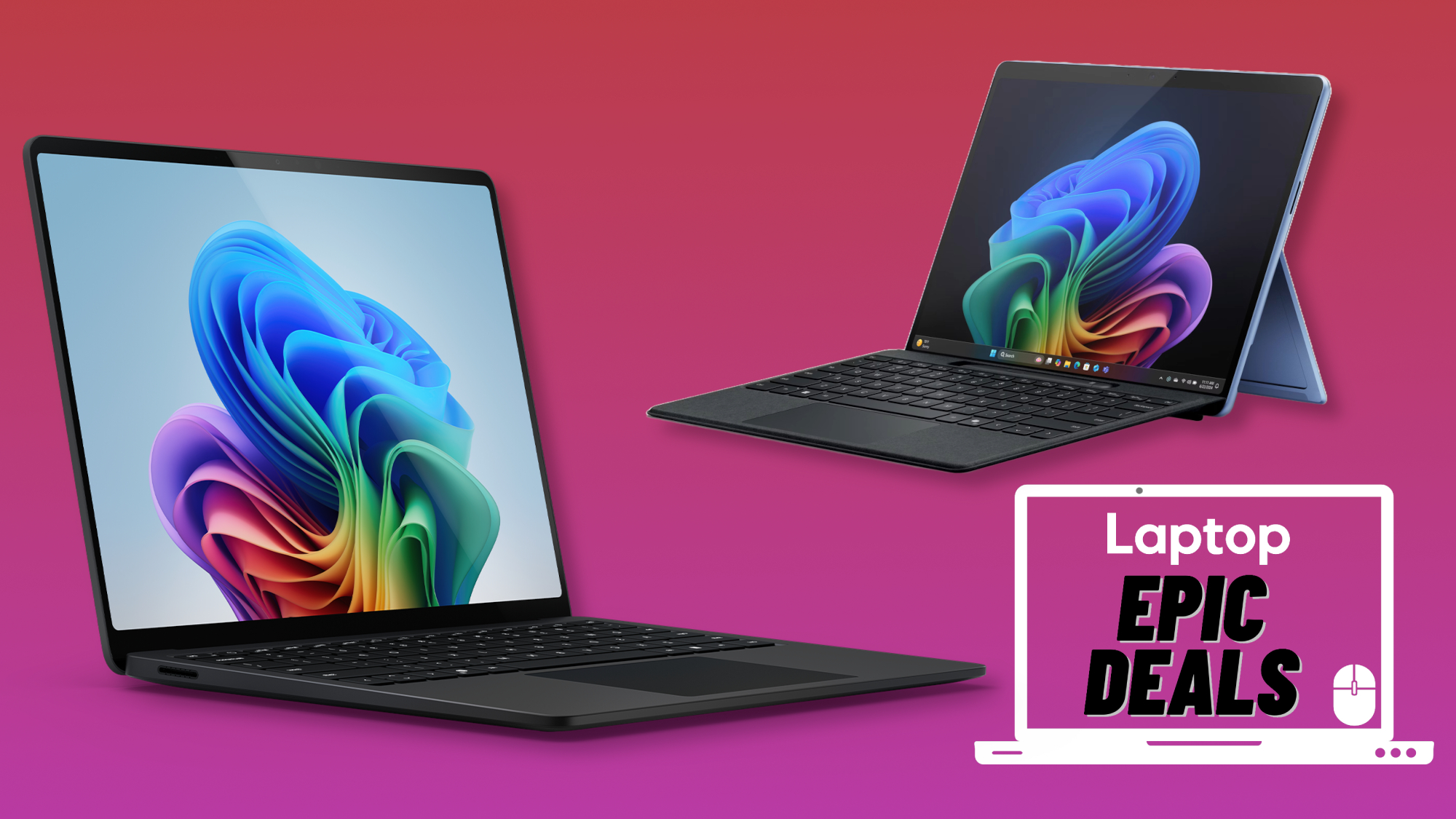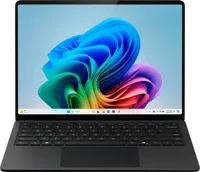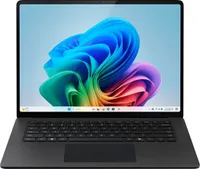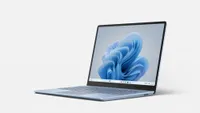The best Microsoft Surface deals in June 2025: Save up to $500
There are a lot of great Microsoft Surface deals up for grabs this summer

Microsoft Surface deals with savings of up to $500? Sure, coming right up!
Now that we're in June, I'm noticing that there are a lot of laptop deals being posted every day -- and some of them actually stick around for a while. I'm shocked (in a good way).
I guess most of us aren't eager to buy a laptop for school or work when the summer is just starting, but now is actually the best time to shop. Some of these Surface Laptops are downright cheap, but as the summer progresses, you can bet they'll go up in price. Supply, demand, and all that jazz.
Meanwhile, the entire Surface Laptop lineup is a great way to keep up with current trends. Microsoft is pushing Copilot+ PCs hard, and if you want to hop on the AI hype train, I have to admit that the Surface is a great choice.
Of course, the best place to start is the latest addition to the lineup, meaning the Microsoft Surface Laptop 7. There are two configurations on sale right now, and one is not for the faint of heart, but the savings are huge.
I'm talking about the Surface Laptop 7 that started at $2,099, but is now $1,599 at Best Buy for a limited time. It's a huge $500 discount, which practically gets you a second budget laptop, or at the very least a pair of headphones to block out the noise on your daily commute. (Hey, have you seen our roundup of the best headphone deals? Summer is a shockingly good time to shop for new tech - I love it.)
Then, there's the other, much more budget-friendly side of the spectrum with the entry-level version of the Surface Laptop 7. It's much cheaper, but it's lightweight, and it still gets you Copilot+ if that's your jam. If not, it's simply a solid laptop for work.
Less laptop, more tablet? I've got you. There are a bunch of Microsoft Surface deals involving tablets; my favorite is the Surface Pro, now $899, down from $1,199.
Here are all the Microsoft Surface deals to check out in June 2025:
Best Microsoft Surface deals — Quick links
- Surface Laptop Go 3: was $949 now $769 @ Amazon
- Microsoft Surface Laptop 7 Copilot+ PC: was $999 now $832 @ Amazon
- Microsoft Surface Laptop 7 Copilot+ PC: was $2,099 now $1,599 @ Best Buy
- Microsoft Surface Pro 11 (LED): was $1,199 now $899 @ Amazon
- Microsoft Surface Pro 11 (LCD) w/ Keyboard: was $1,479 now $1,099 @ Walmart
- Microsoft Surface Pro 11 (OLED): was $1,499 now $1,199 @ Amazon
Best Microsoft Surface deals
Read moreRead less▼
Save $167 on this entry-level version of the Surface Laptop 7. This base 2024 model doesn't have the bells and whistles of the higher-end specs, but it's still packing solid specs for the price, excellent build quality, and a comfortable and stylish design.
Features: 13.8-inch (2304 x 1536) PixelSense 120Hz touchscreen, Snapdragon X Plus 10-core CPU, Qualcomm Adreno GPU, 16GB RAM, 256GB SSD, Windows 11 Home with Copilot+
Read moreRead less▼
Save $500 on the Surface Laptop 7 (2024) at Best Buy.
In our Surface Laptop 7 (13-inch) review, we gave it 3.5 out of 5 stars for its strong performance, long battery life, and bright display. Despite its so-so graphics, it's a solid productivity laptop. This innovative Copilot+ PC aims to transform the way you create and communicate.
Features: 15-inch (2496 x 1664) PixelSense 120Hz touchscreen, Snapdragon X Elite 12-core CPU, Qualcomm Adreno GPU, 32GB RAM, 1TB SSD, Windows 11 Home with Copilot+
Read moreRead less▼
If you're looking for something super portable and easy to carry around, this Microsoft Surface deal is for you. At just under 2.5 pounds, this might be one of the best laptops for students and professionals.
Features: 12.4-inch (1536 x 1024) PixelSense touchscreen display, 8GB LPDDR5 RAM, Intel Core i5-1235U CPU (up to 4.4GHz), 256GB SSD storage, Intel Iris Xe Graphics, fingerprint power button, Windows 11 Home, 15-hour battery life, Wi-Fi 6, Bluetooth, under 2.5 lbs.
Read moreRead less▼
On the tablet front, you can also save $300 on the entry-level Surface Pro tablet. It's got very similar specs to the laptop but without the built-in keyboard. It's basically a Windows iPad Pro.
In our Surface Pro (11th Edition) review, we loved almost everything but the price — an issue this deal fixes nicely.
Features: 13-inch (2880 x 1920) PixelSense 120Hz touchscreen, Snapdragon X Plus 10-core CPU, Qualcomm Adreno GPU, 16GB RAM, 512GB SSD, Windows 11 Home with Copilot+
Read moreRead less▼
If you're willing to spend more, you can get yourself the Surface Pro 11 with a keyboard and a gorgeous touchscreen. This bundle features the Pro keyboard and the Slim Pen, and it's currently discounted by $370, making for some pretty huge savings.
Features: 13-inch (2880 x 1920) PixelSense 120Hz LCD touchscreen, Snapdragon X Plus 10-core CPU, Qualcomm Adreno GPU, 16GB RAM, 512GB SSD, Windows 11 Home with Copilot+
Read moreRead less▼
If you want a higher-spec Surface Pro, the upgraded OLED model is also on offer. You're paying more, but you get a beefier Elite CPU, more storage, and an upgrade to a beautiful OLED display.
Features: 13-inch (2880 x 1920) OLED 120Hz touchscreen, Snapdragon X Elite 12-core CPU, Qualcomm Adreno GPU, 16GB RAM, 512GB SSD, Windows 11 Home with Copilot+
FAQs
Which Surface Laptop should I choose?
Microsoft's Surface Laptops are generally aimed at professionals, creatives, and students. You'll find them among the best laptops for college, but also the best workstation laptops.
The Surface Laptop 7 is the latest Microsoft has to offer. If you need a Copilot+ PC with a powerful processor and decent battery life, that's the way to go. The Surface Laptop 6 for Business is, as the name suggests, aimed at professionals who need great performance and enterprise-grade security.
The Surface Laptop 13 is great if you need a laptop with a touchscreen. The same can be said of the Surface Laptop Go - a great option for students. Lastly, the Surface Laptop Studio is a solid pick for creatives, such as designers and engineers. It's a convertible, meaning you can also use it in tablet and tent modes.
What are some of the best Surface Laptop accessories in 2025?
Surface Laptops offer the same ports as most laptops and tablets do, meaning that you can use most laptop accessories with them without needing to buy something specifically tailored for the Surface. Check out our roundup of the best tech and accessories for remote workers to get a good look at what could come in handy!
Sign up to receive The Snapshot, a free special dispatch from Laptop Mag, in your inbox.

Ian is a UK-based technology, science, and entertainment writer. As a massive nerd, you’ll find him writing about everything from laptops and VR headsets to Star Wars, video games, and Lego.
- Hilda Scott
- Monica J. WhiteContributing Writer





